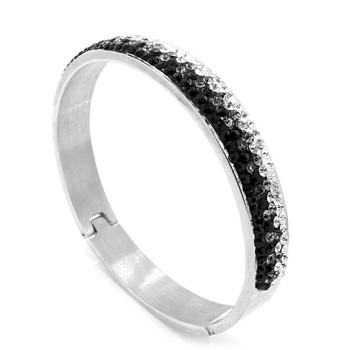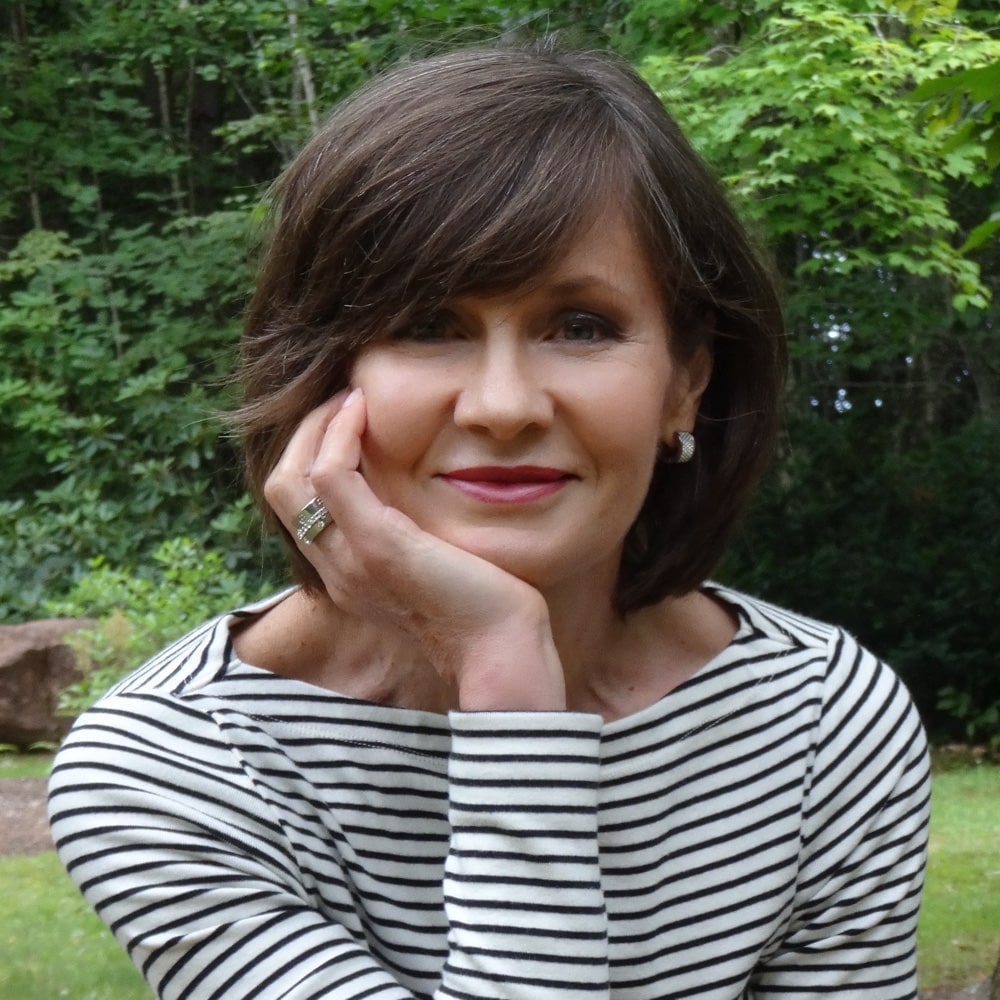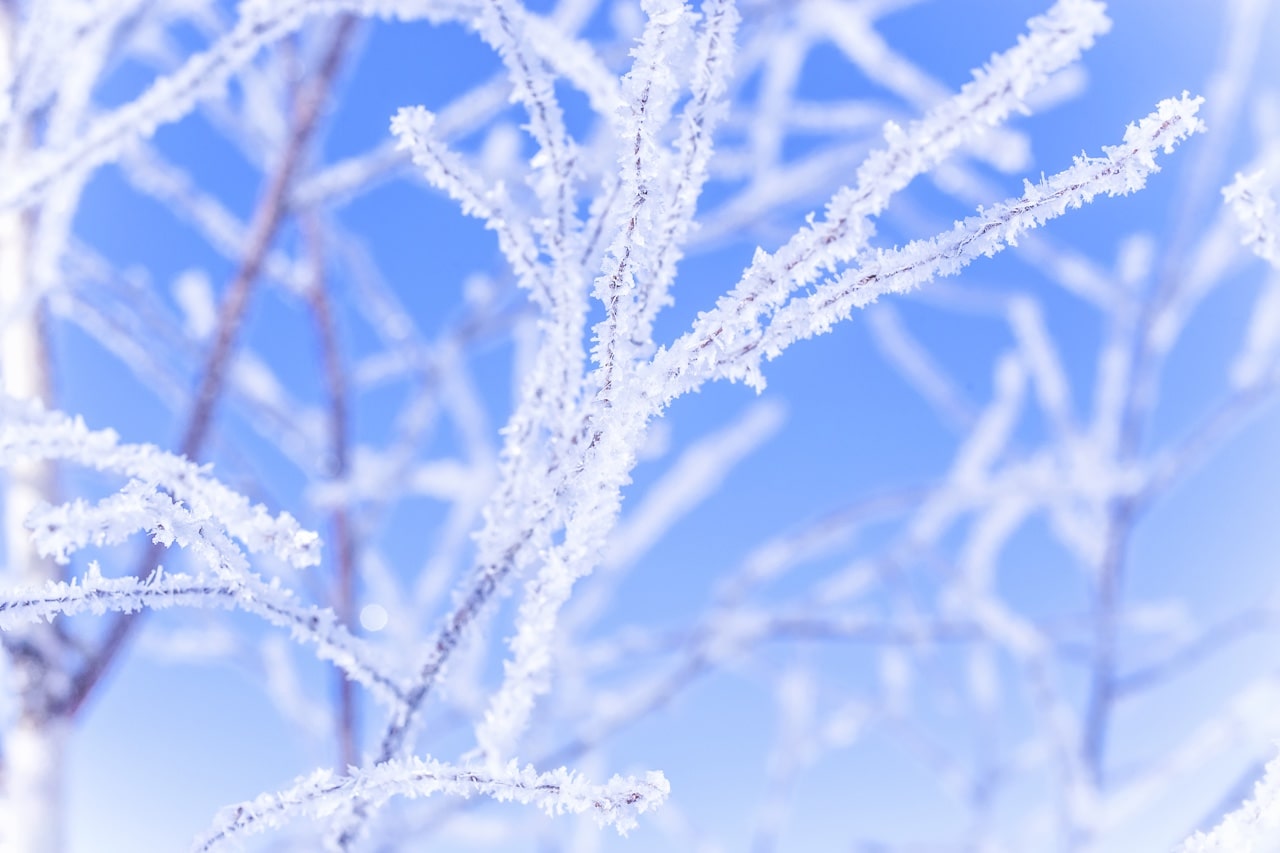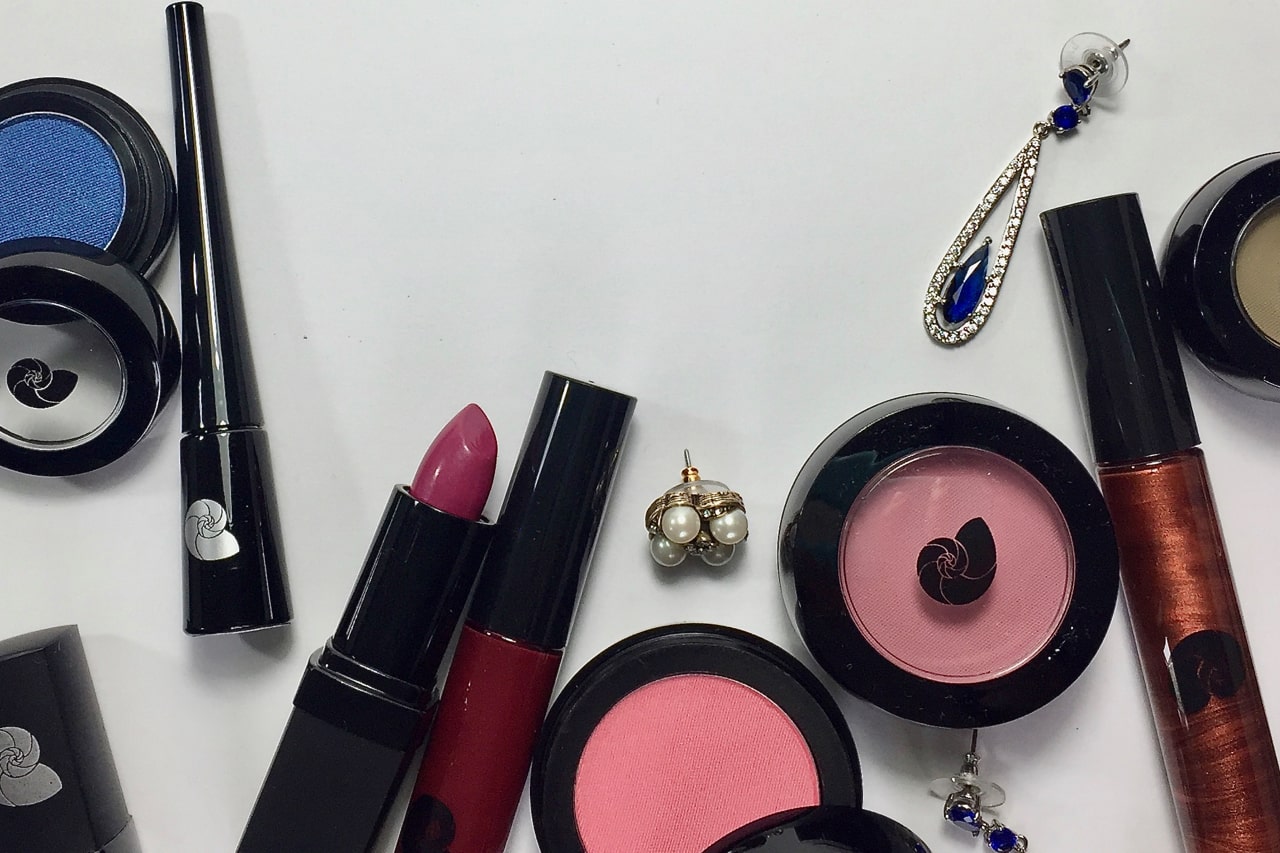To improve our status quo, three questions matter:
- What do I want?
- Where am I now?
- What am I willing to do?
What do I want?
Most of us are clear about what we don’t want. Nailing down what we want is like chasing a drop of mercury around on a mirror. Nearest I can get is, “I want to look like the best version of myself. ” By best, I mean, a person who is grateful for health, self-awareness, and living up to who she is. A whole person, a real person, someone others can believe in. If life were a movie, I would appear as myself.
To figure out how that would look in appearance, I thought of where I see it in others. How do we appear true, neither taking a back seat to ourselves nor adding appearance elements that get between us and others?
If we are to be known by what we wear, as we all are, at least let the information be accurate. Disregarding appearance in an attempt to dilute its power backfires. The power of appearance to communicate is mighty, a player we want for our team.
Our face value has the same power when it’s true. Most people recognize pieces of disguise, but few have the training, time, or incentive to mentally flip-flop through a series of better alternatives. It’s our job to provide our best alternatives.
Sound difficult? Au contraire, it’s so easy. Why? Because you don’t have to figure it all out yourself! That’s the exhausting part and it officially goes up in dust the moment your colour analyst hands you your palette.
I would define excellent makeup as a continuation of our natural selves, adding to our original radiance, health, and definition without altering them. By wearing the colours we are, we create an autobiographical picture. Pictures tell stories and humans are never more attentive than to stories. In this picture of us wearing makeup, others would see vitality and features in focus, neither a fuzzy screen nor an over-definition. Why wear makeup that doesn’t live up to who we are, that is unable to meet us on the road where we walk, that is lagging behind or passed us hours ago?
You might be thinking, “Because it feels safe. I’m willing to pay the price to know I don’t look fake.” That’s fair. Safe makeup might not add health or radiance, it might even subtract them, but it’s unlikely to look excessive. What it might look like is gray, or grayish, makeup. The other thing is, this choice means that we’re living as someone other than ourselves, another kind of mask. Makes me uncomfortable. No makeup is a better option.
Where am I now?
Winter colouring’s status quo is bright colour. Bright means a higher pigment to gray ratio. The opposite term is soft. Softly coloured makeup does what it was purchased to do on softly coloured faces. Winter people wearing soft makeup can render themselves almost invisible, as if they were part of the background, the what-happens-next of gray makeup.
Winter colouring’s status quo is also cool colour. Too-warm eyeshadow can look overheated, like inflamed skin. Too-warm makeup of any kind may look muddy, when the best alternative for every feature is clean and crisp.
Adjacent colours have a counter-current effect on one another. When we look at others, we easily agree that we see head and apparel at the same time and that one profoundly influences our impression of the other. (The same happens when we look in the mirror but it’s funny how much we compartmentalize when we look at ourselves.)
Especially with cosmetics, which are applied directly to the face, a too-soft colour may appear yet grayer, as if the face were actively pulling the colour out of the makeup, giving a kind of flatline effect. Nothing happens. It’s just there. (Applied to a softly coloured face, the soft muting in both skin and cosmetic seem to cancel each other out, leaving behind radiant, abundant, seamless colour.)
When Winter wears their own colours in clothing or cosmetics, they step out of the soup. The appearance can clarify dramatically, giving the rest of us a startled sense of, “How long have you been here?”
One might expect brightly coloured faces to be visible without adornment, but when every colour is bright to the same degree, the effect may appear more blended than it is. Move those bright eyes into a softly coloured face and you’d pick up the brightness soon enough.
Be a Winter with a face defined simply with brows and blush, makeup others would barely detect. Be a Winter with eyeliner and lipgloss who looks awake and ready for the day. Or be a Winter wearing ten products at once. Choose one or all, depending on the occasion. The application changes; the colours remain the same.
If you’re a Winter, the time has come. No face is as defined thanks to makeup, in the way that images (and their meaning) simplify when resolution increases. Other types of colouring tend to look more similar with and without makeup, which is a definite good thing. But it’s the Winters who can go miles from where they began, and that’s good too.
Colour on the face seems to make them appear, perhaps because the face at rest may appear neutral, with beige skin, grey or brown eyes, and brown hair. Add the right cheek or lip colour and whoa, “Have you been here all this time?”
Defining the mouth makes the viewer suddenly aware of the eyes, which seems paradoxical. A better way to say it may be that without lips, the eyes don’t make as much sense. Because cosmetic colours are bright and possibly dark, each part of the makeup application may seem like a lot till all the parts are in place. Apply all the products you plan to wear first. Adjust and balance after.
Personal Colour Analysis is that blinking light that answers, “Where am I now?”
-“You Are Here. “
– “Oh. OK, so I’m not over there. I should be looking over here instead.”
-“Yes.”
-“Well, that helps. What to do next is clear now. I move from that to this.”
-“Yup. Want some help getting started?”
A Winter Face – both extremes at the same time.
To be more specific:
Contrast
Big distance between everything and everything else, such as:
The features from skin. The blanket of skin is even and quiet. Some have ruddiness (which is often exacerbated in soft colours and calmed when wearing Winter colours), many have freckles, but this complexion is rarely the rosy flush. In this even background, add a mouth, cheeks, eyes, and eyebrows whose colours create a big or sudden jump from the background colour. All faces benefit from separating the features from the canvas to the right degree, but in Winters, the degree of separation is bigger because the colour ranges are broad.
 The distance between light-dark levels. As one of the colour ranges, the natural light to dark range is broad. Therefore, the light to dark range of the eye makeup is broad. Eyeliner is dark. The eyeshadow next to it, the lid colour, is a fair bit lighter, although influenced by the shape of the eye. The next band, the eyeshadow contour, is quite dark. The eyeshadow highlight is icy light, close to white. The brow is quite dark, though not darkened much more than Nature designed on anyone.
The distance between light-dark levels. As one of the colour ranges, the natural light to dark range is broad. Therefore, the light to dark range of the eye makeup is broad. Eyeliner is dark. The eyeshadow next to it, the lid colour, is a fair bit lighter, although influenced by the shape of the eye. The next band, the eyeshadow contour, is quite dark. The eyeshadow highlight is icy light, close to white. The brow is quite dark, though not darkened much more than Nature designed on anyone.
The distance between adjacent textures, ultra matte to ultra shine. The skin is a quiet, even layer. Snow White’s face isn’t contoured (the lowlights of Autumn), dewy (the highlights of Spring), or cottony (the watercolour effects of Summer). We can feel the step backwards as we imagine each one, as well as our resistance to it. Winter’s canvas is uniform and unbroken, the blanket of snow, consistent and changeless. From this empty space, eyes sparkle, lips gleam. and cheeks are flushed with red or red-violet. The punctuation of features in background has a piercing quality; therein lies part of Winter’s magic.
I may have mentioned, you don’t have to figure any of this out. That would be re-inventing a wheel that already works like a dream. The question you may want to address is which cosmetics you’d like to wear and try a few from a pre-selected menu. Or try them all and then decide which you’d like to wear, the program I favour to get around our predictions based on previous experiences. This is a new experience.
Drama
 Colour is subtracted from winter landscapes. Light is pulled inwards, whereas colour is reflected light. The skin is the even blanket. The eye colour is surrounded in ice, steel, and coal. So far, the only colour activity is in the eyes. Suddenly, the flush of blood in cheeks and lips feels pure on a still and quiet energy.
Colour is subtracted from winter landscapes. Light is pulled inwards, whereas colour is reflected light. The skin is the even blanket. The eye colour is surrounded in ice, steel, and coal. So far, the only colour activity is in the eyes. Suddenly, the flush of blood in cheeks and lips feels pure on a still and quiet energy.
However lyrical this may sound, you know that the colour palette has done the thinking so you don’t have to. Within your Season, you’re wearing your flesh tones, just like everyone else.
Would this story improve if we added a buttercup or a bluejay?
A low number of ‘colour colours’. i.e. One.
 Drama implies extremes, in colour as in character. By character, I don’t mean hysterics and fainting spells. Perhaps a vein of intensity or aggression is mined at times, with more fragility than one might expect at other times.
Drama implies extremes, in colour as in character. By character, I don’t mean hysterics and fainting spells. Perhaps a vein of intensity or aggression is mined at times, with more fragility than one might expect at other times.
Extremes are at home in Winter cosmetic application and, as with everything else, built into the colour palette. Drama just happens appears when eyeliner is dark enough. On Winters, it looks ordinary and extraordinary at the same time. You can read more about the rare and precious magic of looking normal in a previous post.
Would the image of the owl make sense with gentle eye colour? It would be weird and off-balance. Gentle eye makeup would be the same, left behind, incapable of meeting the natural colours.
Intensity
We said earlier that each part of the makeup application can seem like a lot until the whole face has been applied. For a balanced face, it may be worth considering enhancing each feature to the same degree. Brows, eyeliner, blush, and gloss would do it, and looks healthier and more modern than eyes and nothing else. The Parisian red lips-neutral eyes look is not achieved without eye makeup.
If you decline makeup, you have no concerns. Your Winter clothing colours go a long, long way to creating a healthy, defined face.
If you do choose cosmetics:
Thou Shalt Not Be Wimpy.
Apply the colours and blend once every feature is in place, at least until you’re accustomed to how much will balance the final face. Blending too early may mean that you take time later to add more back in. If colours are intense in the pan, as many of these are, swirl the brush on a piece of paper or paper towel before applying. The colours don’t change; the application does.
What am I willing to do?
Look very different to yourself?
Show up differently from your friends?
Draw attention to yourself? As many have discovered, getting noticed for being different is something we grow into, even is it’s a good different, an amazing, “Is that really me?” kind of different. Luckily, you’ll find lots of help here.
In a world of visual concealment for a thousand valid reasons, are those reasons yours?
Placing Terms and Conditions on what we’re willing to do is normal and intelligent. I admire a woman who says, “I’m fine with colouring my hair, I wear only eyeshadow and pick my own, but I’d like to know what I could buy instead of black.” She has made a free and informed choice.
The Nature of Reflected Light
The idea here is that our natural colours have a way of reflecting light that we sense or associate beyond just the colour itself. The wavelengths have properties that reach our other senses, as texture for instance.
In Chinese medicine, our fingers are entry and exit points for energy. How could they not be? They touch everything. They’re up and down-loading who we are all the time. Each of our sense organs is doing the same. Each of the 12 Season palettes speaks a certain language, is evocative of certain emotions, reminds of certain landscapes, and makes sense when consistent in colour, touch, sound, scent, and taste. It’s all happening at once.
The colour of US paper currency would not be slick or sparkly; the green feels like it would be dry. Lavender is easier to picture as leaves than leather, and easier as feather than bark, though, of course, anything is possible in today’s textile industry.
The Winter surface is smooth and hard, an extension of how gas, liquid, and solid behave on Earth. Dark Winter is smoother than Dark Autumn but not 100% smooth; as temperatures fall, texture thickens, from leather to lead. The cycle continues towards True Winter, the surface becoming smoother and harder, and we think of mirror and diamond. Bright Winter may be smoother still, as warmth returns and atomic motion quickens, such that surfaces sparkle. The crystal to jelly quality is on the way, shinier still and semi-transparent.
Dark Winter: Vinyl
Dark Winter is the Season name for a group of colours that are mostly Winter, with a smaller amount of Autumn. The mixed contribution from warm and cool Seasons places it among the 8 Neutral Seasons.
 The natural reflectivity of Dark Winter skin might be similar to vinyl. Floor tiles or a phonograph record are smooth and barely textured, not mirrors. Too shiny would look oily. Both are hard, but not diamond. Autumn in the mix gives the shine a dullness and the colour, an opacity.
The natural reflectivity of Dark Winter skin might be similar to vinyl. Floor tiles or a phonograph record are smooth and barely textured, not mirrors. Too shiny would look oily. Both are hard, but not diamond. Autumn in the mix gives the shine a dullness and the colour, an opacity.
Perhaps also a car. Metallic like Autumn, but smoother and harder. Industrial, tough, shiny, smooth, waterproof, and useful. Good Dark Winter words. Good words for their jewelry and belts too. Dark Winter takes Dark Autumn’s Rustic Opulent and brings in Gladiator. Ninja Pragmatic? I think that’s just me.
A sweater in black or dark grey metallic looks like chain mail. Stud, armour, and link effects are a natural fit here. Keep in mind that our colours and our lines are not the same. Metallic sweaters come in thousands of styles. To choose yours, have a style or line analysis, a service offered by several Chrysalis colour analysts.
Soft or skin-tone lips on Winter feel a bit washed out. Smoked berry reds look alive and belonging on Dark Winter, balancing the eyes and somehow more natural than no lips. Choose a formulation as sheer or opaque as you prefer. Dark muted fuchsia gloss is so easy and so good, a subliminal jewel effect for the mouth.
Darkness works. Smoke is natural, the Autumn muting in the skin. Smoked eyes make sense. Any Season can do smoked eyes with their colours, but it’s most at home on the Darks. Even the other two Winters are best to exercise caution with darkness and smoke to avoid eye makeup looking heavy. They look better in sharp and silvery.
True Winter: Ceramic
Like a porcelain sink. Impenetrable, tough, and enduring.
Clean. Picture the makeup colours from your palette painted directly on that white sink. Clear-cut eyes, spare with the colours, alongside red-violet cheeks, red-violet lips. No ribbons, no frills.
Not smoked (Dark Winter) or sweet (Bright Winter). Can you tell this before the person is draped, by looking at them? Absolutely not.
 Eyeliner is dark. Eyeshadow is quite light and silvered, depending on the anatomy of the eye. Contour is fairly dark. The highlight is near white or some icy (near white) colour. A little frost effect in the highlight works, whereas a fully matte white or near-white highlight is excellent for Dark Winter, sheer enough for skin to show through and warm the white just right.
Eyeliner is dark. Eyeshadow is quite light and silvered, depending on the anatomy of the eye. Contour is fairly dark. The highlight is near white or some icy (near white) colour. A little frost effect in the highlight works, whereas a fully matte white or near-white highlight is excellent for Dark Winter, sheer enough for skin to show through and warm the white just right.
On the softer and lighter Seasons, the liner, lid, and contour are closer in darkness levels. They distinguish their roles through different colours in similar darkness levels. Winter’s eye makeup colours, on the other hand, distinguish their roles by using one colour (gray) in a wide span of darkness levels. With Winter colouring, light means really light and dark means really dark.
To say so much with so little is the power of Winter. You are it already. “So be it”, as P. said.
Most True Winters are a natural fit for blush and lipstick in the red-fuchsia spectrum. Red lips (and pitch black eyeliner), certainly work for some women, while others find these dramatic, especially with the intensity that cosmetic pigments can reach. Red is alleviated in Dark Winter with smoke (burnt rose or mulberry red) and in Bright Winter with sweetness (strawberry or coral red). True Winter does the same by using violet, meaning clear purpled pinks, from icy to dark, from sheer to opaque. Icy colour means very light or close to white; the product could be matte or shiny.
In cosmetics, some True Winters wear red better than fuchsia, or both equally well. Try both with your colour analyst. While there is no common denominator feature, strong yellow or olive tones in the surface skin tones may be a clue. In apparel and accessories, all Winters wear their reds exceptionally well, better than anyone saw coming, including them.
Bright Winter: Silicone
The unique blend of innocent light with the brittle sharpness of crystal.
Spring has a hand in Bright Winter. Therefore, we need a sugar coating, shiny, fun, and ornamental. Pink or icy violet frosting spritzed on lids, cheeks, and lips, somehow transforms an outer space effect to perfectly reasonable, the fairy tale and the normal at once.
In the spirit of play, more colours together look like the sparkles in the tailwind of a magic wand. Theatrical effects (cat eye, a few false lashes, fine winged brows, candy lips) are often at home.
If this doesn’t sound right to you, don’t cancel Bright Winter just yet. To reiterate because it will change your life, have a line or style analysis first. You can paint ten thousand faces from the same group of pigments, not a single one with cat eyes.
Definitely a lighter overall palette than the other Winters, still with the same extremes of light to dark that all Winters share.
 The skin’s reflectivity had me searching for an analogy. Fine china, with that near-transparent edge? Bit too delicate but close.
The skin’s reflectivity had me searching for an analogy. Fine china, with that near-transparent edge? Bit too delicate but close.
Thinking, thinking,…mostly Winter, therefore even, smooth and thick, with transparency in the outermost layer… got it. You’re going to love this.
Jellyfish! Stay with me here.
Heavenly and magical come with a price, which is danger.
Silicone skin. Others pay thousands, even millions. You were born with it. Elevate that which you are with intensely coloured products in pigments so pure, you can almost see through them. Transparency is a phenomenon of Spring.
If you’re up for a little theatre, brush powders with a touch of finest shimmer on all exposed skin for an overall crystalline effect.
 A little iced gold uplighting? Sure.
A little iced gold uplighting? Sure.
Iced pinky peach, always good on Brights.
Bronzer? No. We feel no bronzer here and nor do we wish for any.
Recap
The skin is calm and even in colour and texture. Cool, bright colours and big distance between light and dark create a clean canvas, clear features, and healthy skin tone. The sense of where one colour ends and the next begins is not in question.
Once your Season is identified, your colour analyst is able to provide lists and resources filled with excellent cosmetic suggestions. Take a free course at Fargeporten. The 12 BLUEPRINTS store offers products and pictures as well.



